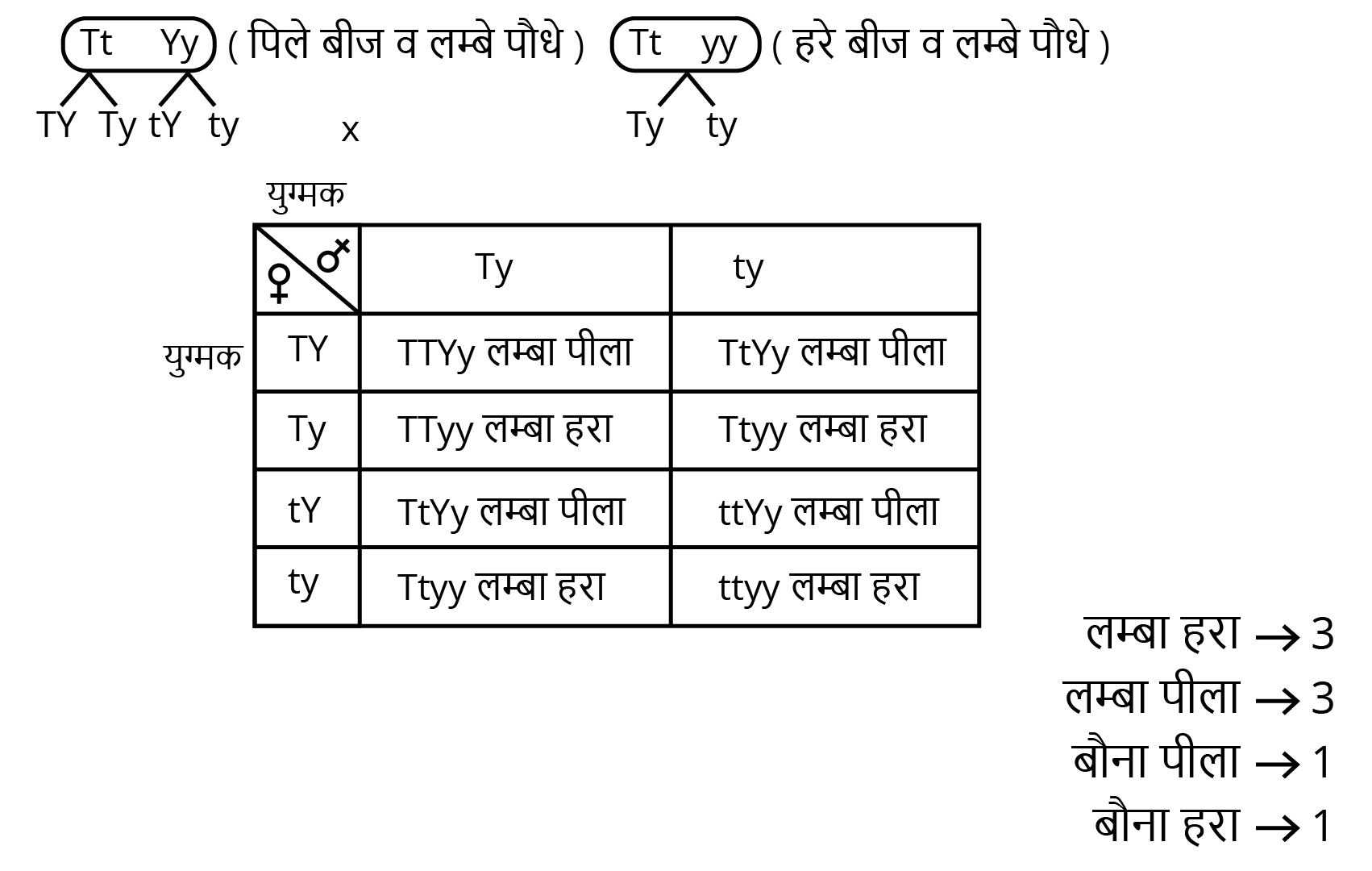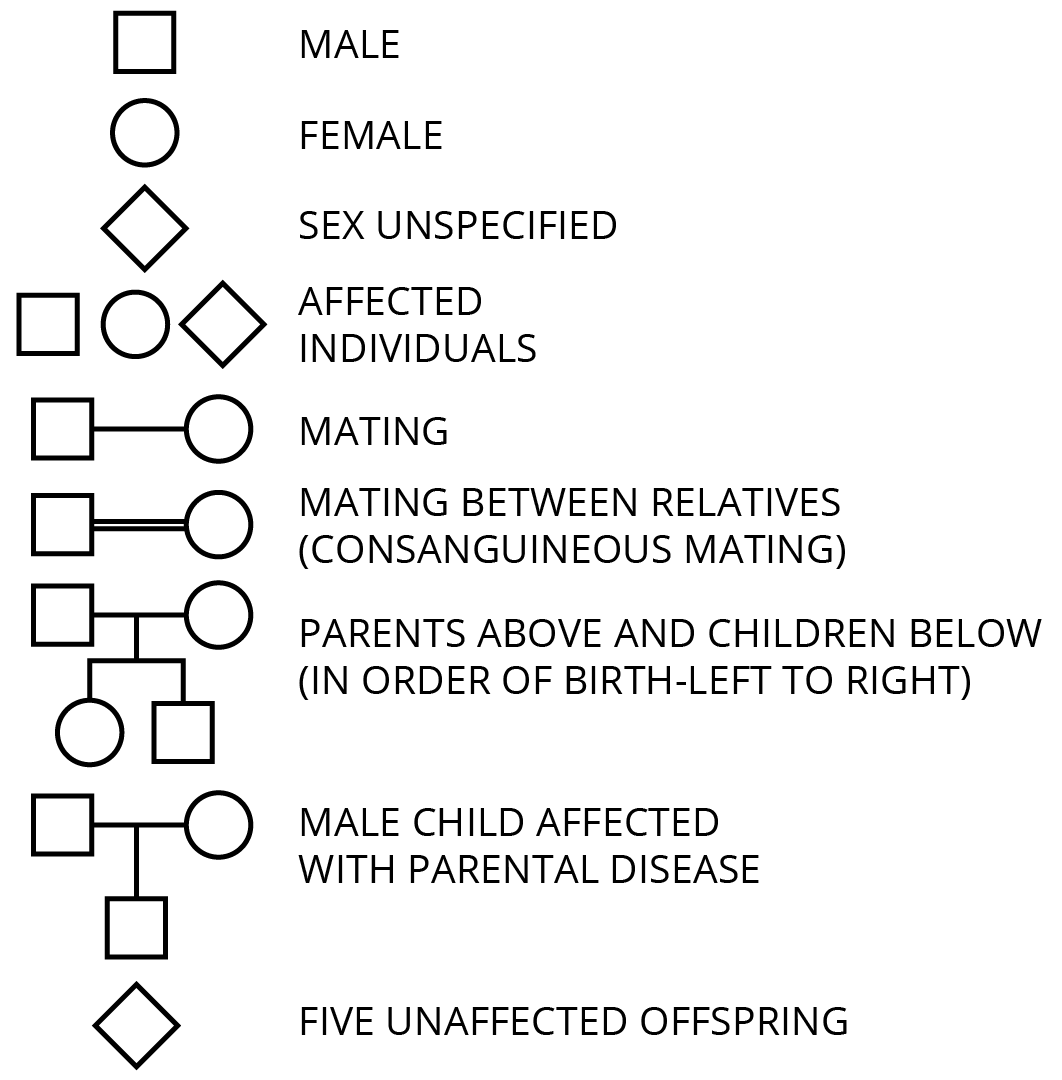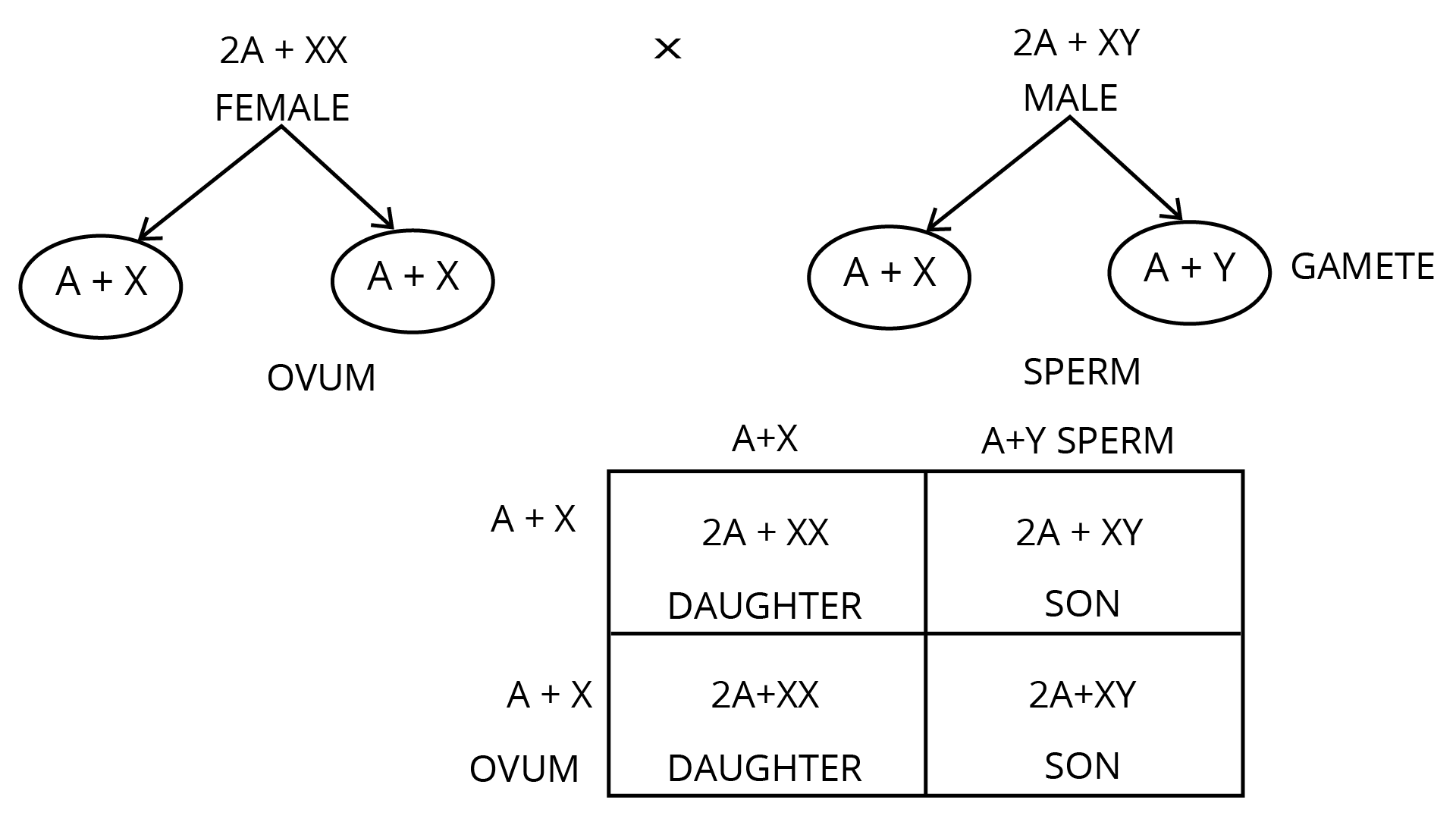Solved NCERT Questions For Class 12 Biology Chapter 5 In Hindi - Free PDF
FAQs on NCERT Solutions For Class 12 Biology Chapter 5 Principles Of Inheritance And Variation in Hindi - 2025-26
1. How do NCERT Solutions for Class 12 Biology Chapter 5 help students follow the CBSE method of answering inheritance questions?
The NCERT Solutions for Class 12 Biology Chapter 5 guide students to answer questions using a step-by-step method aligned with CBSE exam patterns. This approach emphasizes clear presentation of principles such as the law of dominance, well-labeled diagrams, and logical explanations for Mendelian and chromosomal theory problems, helping to earn maximum marks under the marking scheme for the 2025–26 syllabus.
2. What is the correct method to solve dihybrid cross questions as per NCERT Solutions standards?
To solve dihybrid cross problems according to NCERT Solutions standards, students should:
- Identify parent genotypes and phenotypes
- Show formation of all possible gametes using the FOIL method
- Draw a Punnett square with all combinations
- Calculate genotype and phenotype ratios
3. Why do step-by-step NCERT Solutions emphasise the use of Punnett squares and genetic terminology?
Punnett squares offer a visual, systematic way to represent inheritance patterns, making complex genetic crosses easier to understand and explain. Using correct genetic terminology (like heterozygous, homozygous, allele) ensures answers are precise and follow CBSE marking criteria, enhancing answer credibility and accuracy.
4. How are students advised to approach questions on genetic disorders in official NCERT Solutions for this chapter?
NCERT Solutions instruct students to:
- Define the disorder (e.g., sickle cell anaemia, phenylketonuria)
- Explain its genetic basis (affected gene/allele and mode of inheritance)
- Mention symptoms and inheritance patterns (autosomal/recessive/dominant)
- Use tabular or bulleted format for clarity, as recommended in CBSE scoring rubrics
5. What steps should be followed for solving pedigree analysis problems in the CBSE Class 12 Biology exam?
When answering pedigree analysis questions:
- Carefully observe standard symbols for males, females, and affected individuals
- Trace inheritance of the specific trait across generations
- Identify the type of inheritance (autosomal/sex-linked, dominant/recessive)
- Conclude with justified reasoning using correct genetic concepts
6. What are common mistakes to avoid when writing answers for inheritance and variation problems using NCERT Solutions guidance?
Students should avoid:
- Missing steps in cross or Punnett square explanations
- Incorrect genetic terms (like confusing genotype with phenotype)
- Lack of diagrams where needed (e.g., for test cross or linkage questions)
- Not justifying answers with proper laws or reasons
7. How do NCERT Solutions integrate conceptual depth when explaining the law of independent assortment?
NCERT Solutions address the law of independent assortment by breaking down the principle, illustrating with examples (dihybrid cross in pea plants), and using diagrams to show independent segregation. This method helps students grasp the mechanism and apply it to complex questions, enhancing conceptual understanding and CBSE marks.
8. In what way do solution steps differ when a question requires comparing codominance and incomplete dominance?
When comparing codominance and incomplete dominance, NCERT Solutions suggest:
- Defining both terms clearly
- Giving specific textbook examples (e.g., ABO blood groups for codominance, flower color in Mirabilis jalapa for incomplete dominance)
- Presenting differences in a table for clarity
- Highlighting unique features as per CBSE standards
9. Why is it important to cite Mendel’s experimental methods in step-wise solutions for inheritance questions?
Citing Mendel’s experimental methods, such as selection of pea plants, use of clear contrasting traits, and controlled breeding, adds scientific validity to answers. Including these steps in solutions shows thorough understanding and fulfills CBSE criteria for detailed explanation, improving answer quality and reliability.
10. How do NCERT Solutions for this chapter support students in addressing application-based or HOTS (Higher Order Thinking Skills) questions?
NCERT Solutions prepare students for application-based and HOTS questions by:
- Offering detailed reasoning for outcomes in novel genetic scenarios
- Incorporating recent scientific findings and updated terms
- Guiding logical deduction from pedigree or mutation data
- Ensuring answers are clearly structured and justified, matching the increasing difficulty trend of CBSE exams



























